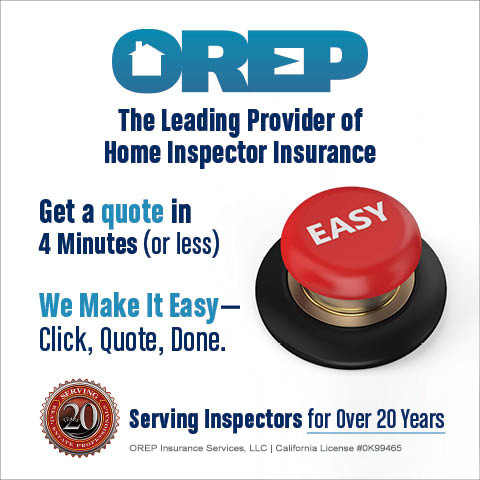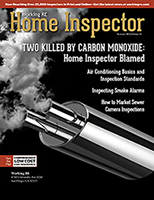 | > E&O/GL Insurance for Home Inspectors Competitive Rates, Broad Coverage, Free Risk Management, online inspection support for tough questions, discounts on education and more… Professional Coverage, Competitive Pricing Shop OREP today! |
5 Roofing Red Flags to Be Aware Of
By Paul J. Watrous, President of NRCIA
The roof is one of the most essential components of any structure. It is the first line of defense against the elements and protects your property from damage and destruction. Unfortunately, it is rarely maintained properly and often overlooked. That’s because the roof suffers from the “out-of-sight, out-of-mind” mentality.
To help combat this, the National Roof Certification and Inspection Association (NRCIA) has put together a list of five common red flags to be aware of when working around (or inspecting) the roof. If you notice one or more of these red flags, it is recommended you schedule a professional roof inspector to diagnose the health of the roof system properly.
1. Moisture Stains or Damage on Roof Sheathing
Attics and unfinished garages may have a roof system sitting directly above them. These areas may give you a view of the roof sheathing. When roof inspectors look at the sheathing, they look for water stains, water damage, dry rot, or any other damage to the material.
Below is an example of damaged sheathing (See Figure 1). The signs indicate that this was likely caused by an external force to the above roof system, possibly due to storm-related trauma.
The underlayment is exposed and compromised since we can see clear signs of moisture intrusion below the point of damage. This red flag should be further evaluated.
In this photo, we can see spaced/skit sheathing with a wood shingle roof system. Several decades ago, felt was installed to swell up and to become waterproof, similar to an oak barrel for wine and spirits.
In Figure 2, we can see dark marks on the wood shingles. This indicates moisture stains (See Figure 2). Although the water stains here don’t immediately prove a roof leak, it is a red flag and should trigger a detailed roof inspection.
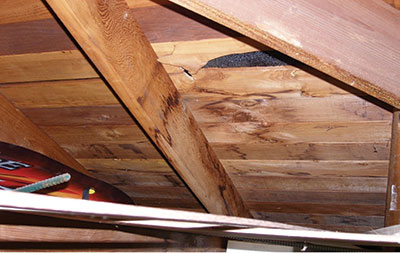
Figure 1: Damaged Sheathing
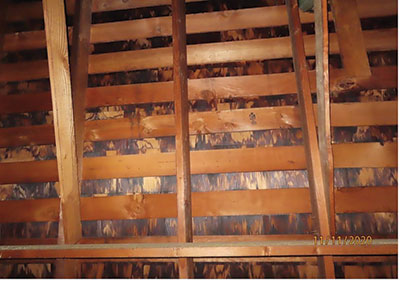
Figure 2: Moisture Stains
(story continues below)
(story continues)
2. Roof Penetrations Not Properly Sealed
Home inspectors can also inspect roof penetrations in the attic and garage. It is easier to observe symptoms of roof penetration problems from within the property. Damage or defects found in the interior will guide roof inspectors to the source of the damage on the rooftop. The attic gives you a better view of the roof penetrations, such as chimneys, vents, and other items that stick through the roof.
Roof penetrations are highly susceptible to moisture intrusion. Pay extra attention to the penetrations to identify any red flags (See Figure 3).
Here is another penetration that displays moisture stains (See Figure 4). You can spot the red flag by the discolored sheathing and framing.
If red flags are present, like the water stains seen here, the flashing could be missing or improperly installed, and/or the sealant could have deteriorated.
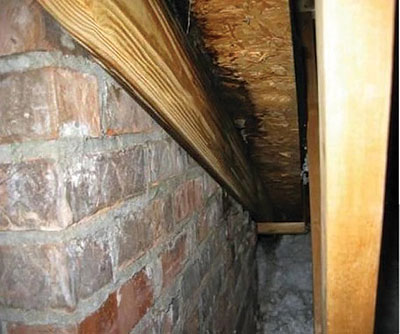
Figure 3: Moisture Intrusion
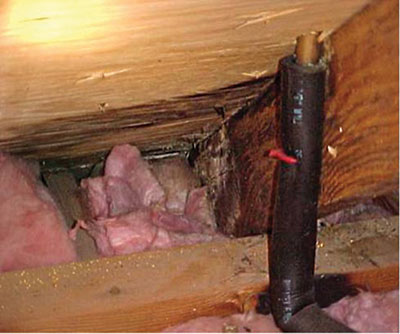
Figure 4: Discolored Sheathing and Framing
3. Moisture Markings Under Eaves
When possible, take a good look at the underside of the eaves. This area often has visible stains or damage that goes unnoticed because it is viewed more as a cosmetic component of the roof (See Figure 5).
Naturally, the board collects dust and becomes dirty. However, rainwater can wash away some of the dirt if a leak is present, leaving cleaner markings. This type of staining is not consistent with a pressure washer or a garden hose.
If you see moisture stains on the backside of the eaves, it is an indicator that the underlayment is compromised, starting to deteriorate, or it may be time for a complete replacement.
If moisture is present long enough, dry rot will start to develop. Notice that you can also see distinct moisture stains where the rainwater is washing away the dust (See Figure 6). This damage is also directly below a valley location.
An expert would be able to use these clues to find the source of these problems. For example, this picture of dry rot on the eave underside, points to possible deterioration of the felt underlayment.
Dry rot can look like peeling paint and is often painted over instead of being thoroughly evaluated. However, a new coat of paint does not fix old problems.
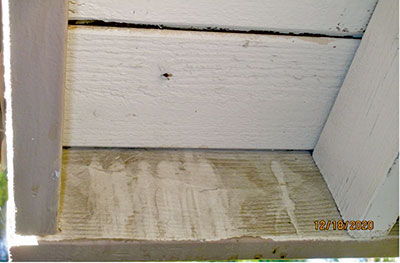
Figure 5: Moisture Markings Under Eaves
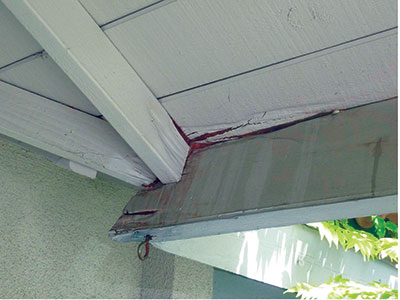
Figure 6: Dry Rot Below a Valley Location
4. Debris, Debris, Debris
Debris is a potent red flag that will slowly eat its way through the roofing material. Debris build-up is a common issue and should be removed annually as a part of any roof care plan.
Debris poses multiple risks to the roof system, but the most damaging is the ability to divert water flow (See Figure 7).
Water must flow down the roof, but debris blocking its path can push it laterally. This diversion causes the water to get under the roofing material as it looks for the path of least resistance. Additionally, as the debris decomposes over time, it will secrete acid. This causes accelerated deterioration reducing the roof’s effectiveness, and shortening the material’s lifespan.
5. Misaligned Roofing Materials
Roofing materials perform best if the contractor correctly installs them. In all types of roof systems, misaligned materials will reduce the effectiveness of the roofing material, increase the likelihood of moisture intrusion, and reduce the roof systems lifespan as a whole.
In the picture here, you will notice that the slipped tiles are not aligned properly (See Figure 8).
This misalignment results from incorrectly mapping out the roof system and failing to fasten the roofing materials properly.
The additional safety concern is that the tiles can slide off the roof and cause personal and/or property damage.
You will also need to look for misalignment on a low-sloped roof. Notice the black line between the two sheets of roofing material (See Figure 9). That material should properly overlap and adhere to the adjacent sheet.
Essentially, that black seam of the roof is not covered correctly, and, over time, it will be highly susceptible to moisture intrusion. This over-exposure is a sign of an improper installation and must be addressed immediately.
An important note to remember: any roofing material that is not correctly installed according to manufacturer specs means the manufacturer’s warranty is nullified. Unfortunately, cutting corners and poor quality can affect property owners in more than one way.
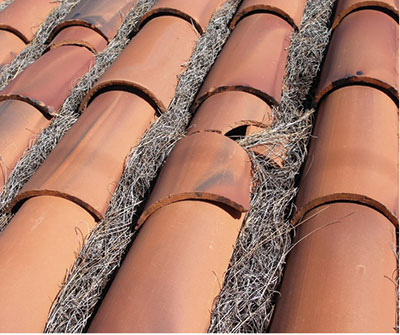
Figure 7: Debris on Roof System
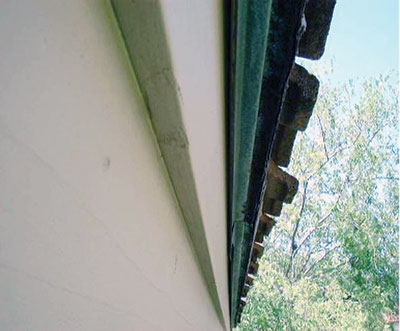
Figure 8: Misaligned Roofing Materials
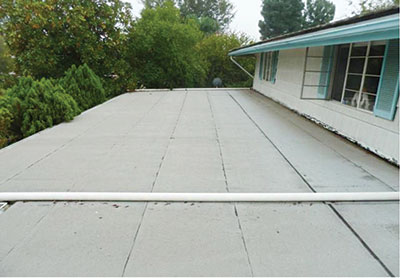
Figure 9: Misalignment on a Low-Sloped Roof
Learn More about Roofing Red Flags
To help facilitate an improved understanding of the health of roof systems, the NRCIA has been training inspectors on how to identify roofing-related red flags, how to provide roof consultations for your clients, and when to recommend roof inspections and certifications.
OREP Members looking to boost their knowledge can sign up as an NRCIA Affiliate for FREE to take the advanced roofing course: Red Flags: When to Recommend an NRCIA LeakFREE® Roof Inspection and Certification. (To sign up as an OREP member, email subscription@workingre.com for more information.)
This four-part advanced roofing course will give you the tools to systematically identify potential problems with a client’s roofing system and show you when to refer and defer to an NRCIA-certified roof inspector. By the end of this course, you will be aware of roofing-related red flags and be able to communicate your recommendations, all while you complete your routine services for your clients. (Visit NRCIA.org for more!)
About the Author
Paul J. Watrous is the president of NRCIA (National Roof Certification and Inspection Association). He oversees member training and plays a key role in advancing NRCIA’s mission and vision for the roofing industry. Paul has over 10 years of experience in the roofing industry. He can be reached at Paul@NRCIA.org
OREP Insurance Services, LLC. Calif. License #0K99465


